What do triangles, diamonds, and stars have in common? If your answer to our little pop quiz is that they’re all geometric shapes, you’re going to be disappointed.
Correct, obviously. But disappointed.
In fact, we’re going to show you another side to these unassuming polygons. Each — in their own special way — acts to help us measure project success.
In this article, we’ll discuss the triple constraint theory — or the “project management triangle” — and whether it’s still relevant in the fast-paced, highly changeable, modern project management environment.
We’ll also explore what other models — no prizes for guessing these are diamond and star-shaped — bring to the table, and which will make sure your stakeholders stay happy bunnies.
What is the triple constraint theory?
Given the name, it’s not going to surprise you to know that the triple constraint theory is about 3 things: scope, time, and cost.
These 3 elements — referred to as “the iron triangle” — are the traditional constraints considered in a project. Quality is often placed in the center of the triple constraint triangle and is affected by all 3 variables.

Let’s look at them in more detail.
- Project scope: the project scope is all the features that need to be delivered to meet the project goal.
- Project time: this is the expected duration of the project. Once the amount of work is understood, project managers can estimate the expected duration of each individual work package or deliverable.
Once you’ve arranged all the individual tasks chronologically — identifying any overlaps and dependencies — you can estimate the overall project duration.
- Project cost: this is the overall cost of the project. You’ll need to budget for facilities, materials, labor costs, and any other resources required.
The triple constraint theory states that a change in any of the constraints impacts the other 2, and often requires a trade-off to keep things in balance.
So, if you want to speed up project delivery, you have to spend more on labor costs to make it happen. If you want to increase the scope of the project — and you don’t want the overall quality to suffer — you’d expect it to take longer and cost more.
How was the theory traditionally applied?
The triple constraint theory claims that changing one constraint affects the others.
So, keeping an eye on the 3 variables has traditionally been the key factor in monitoring project progress throughout the lifecycle.
This sounds simple, but with 57% of projects finishing over budget and only 29% of projects completed on time, it’s obviously more challenging to find a balance between the constraints than you’d expect.
Let’s look at how we can use the triple constraint model in some key project phases.
Project planning
In the project planning phase, the scope needs to be finalized, and the project budget and duration need to be estimated.
To fully understand the scope, use a work breakdown structure — this is helpful to identify all the individual tasks that make up key project deliverables.

Once you understand the work that needs to be delivered, you can use estimating to plan how long each task should last.
Organizing the tasks in sequence will help you identify the critical path — or the longest string of activities from the start of the project to the end. Adding the duration of those activities together gives you the overall project duration.
This can be pretty time-consuming to plot manually, but all good project management software will do this for you.
Here’s what it looks like in monday.com:
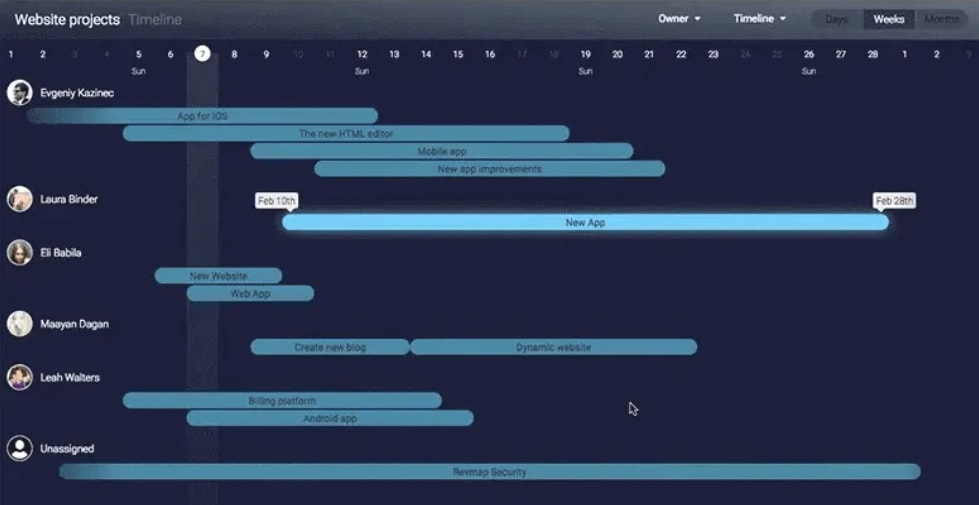
If you want to learn more about estimating project duration, check out our no-nonsense guide to the critical path.
Finally, you’ll need to agree on a budget to deliver the scope. Effective resource planning can help identify the costs associated with labor.

You can use a budget tracker to bring together all your expected costs, and later track your actuals against them.
![]()
All of this should be captured in your project cost management template and acts as a baseline to monitor progress against.
And, why exactly is this important?
Capturing all this information during the project planning stage allows 2 important things to happen.
1.The project manager can assess whether the agreed duration and budget are realistic to deliver the scope of work.
If not, negotiation needs to happen with key stakeholders to decrease the scope or increase the duration or budget — or both — to ensure a quality outcome is achieved.
2.Through these conversations, business stakeholders get closer to identifying which of the variables is their primary constraint. Perhaps the budget is finite, or there is a hard deadline as to when the project must be completed.
Applying the triple constraint theory during project planning makes sure all parties are agreed on the primary constraint and work to balance the other constraints and make sure the project is successfully delivered.Project execution
Once the project is underway, monitoring against the 3 variables enables the project team to track project progress.
Comparing actual values against planned values during this stage is a clear indicator as to whether the project is on track or if action needs to be taken to get it back on course.
![]()
Understanding the triple constraint theory helps the project team — and business stakeholders — appreciate the impact of changes to one of the variables on the others, so no-one is burying their head in the sand.
Project closure
During project closure, final project reporting indicates how project delivery has performed against these variables.
If the project was over budget or ran late, lessons learned should be recorded to ensure the same mistake doesn’t happen in the future.
Is the triple constraint theory still relevant?
The triple constraint theory took root in traditional project management industries, such as manufacturing.
And it works really well for large infrastructure projects where the scope is fully defined at the beginning of the project, and time and cost parameters must be strictly adhered to.
But, with the introduction of the Agile methodology and the changing project environment, some project professionals believed the triple constraint theory had become less relevant.
In Agile projects, the scope is not fully defined at the start of the project — yet time and cost often are — so it was argued that maybe scope isn’t the project constraint it was traditionally seen to be.
Other practitioners were less concerned about the rigidity of the model and more about the fact that it didn’t measure the thing that should matter most — business value or impact.
3 Alternatives to the “iron triangle”
Here are 3 alternatives that were created in an effort to overcome the weaknesses of the iron triangle:
1. Agile triangle
The idea that the “iron triangle” is less relevant to Agile projects led to the creation of the “Agile triangle.”
The argument is that Agile project management delivers value through its flexibility, so being restricted by fixed constraints isn’t an appropriate model.
The Agile triangle focuses the conversation more on value and quality.
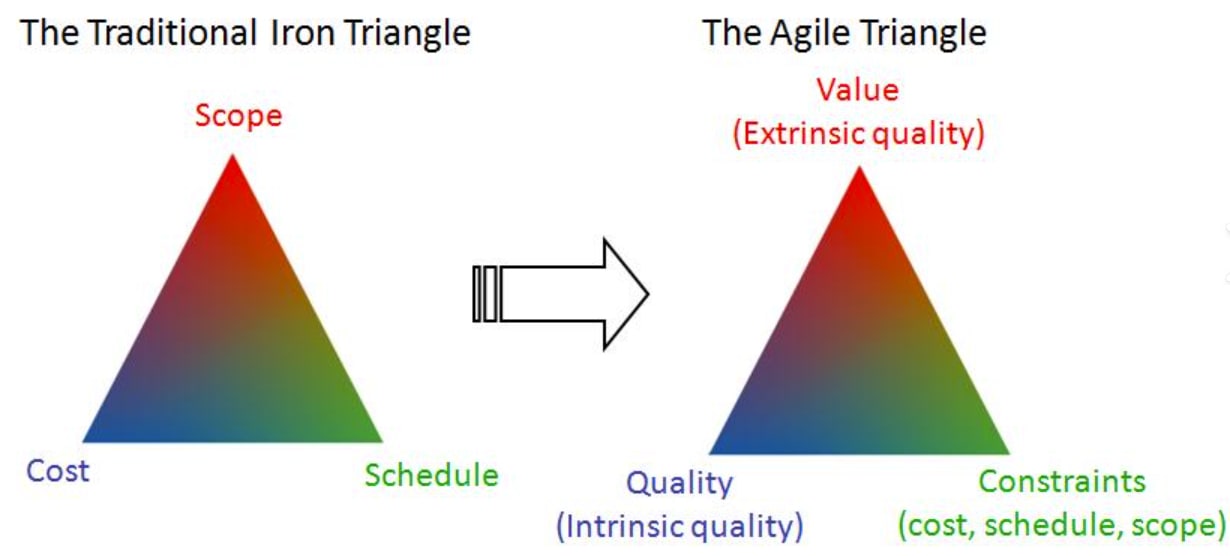
The 3 constraints are still important elements to consider but sticking within them is not the goal of the project.
We all know projects that were on-time, on budget, and delivered the requirements yet created no real business value.
Compare that to the production of ‘Titanic.’
It ran over budget — doubling its cost from $109m to $210m — and premiered nearly 6 months late. It did, however, go on to gross nearly $2bn at the box office, so it’s safe to call it a success.
2. Project management diamond
This model takes “Quality” from the center of the triangle and adds it as a constraint in its own right. This forms a diamond shape.
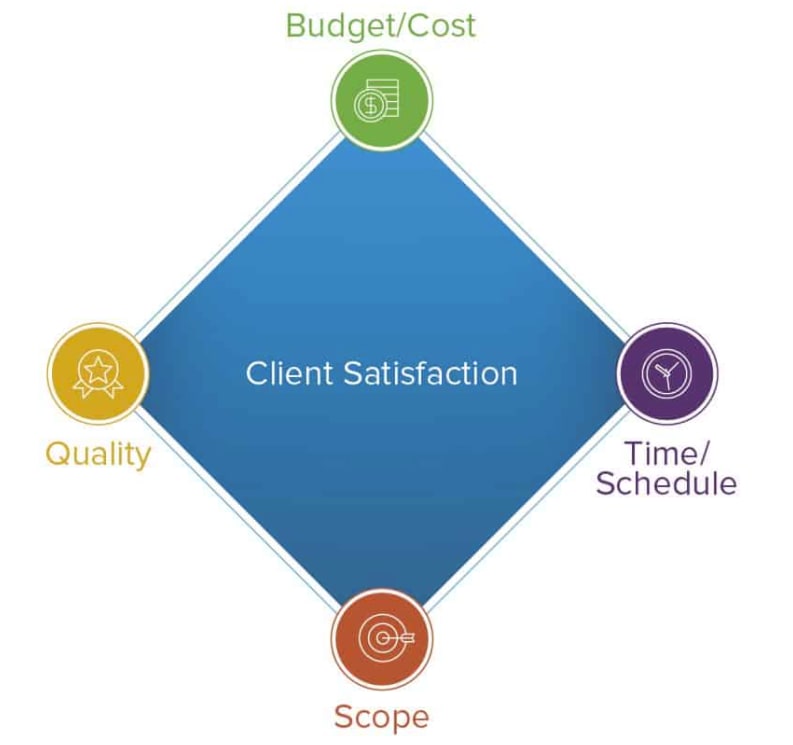
Practitioners using this model argue that the “Quality” of the project output can vary and still result in customer satisfaction. This is most often seen in software projects where the level of functionality can vary.
Sometimes delivering only core features is enough to satisfy stakeholders. On other occasions, a bells-and-whistles product is the only outcome that’s acceptable.
As with all of these models, early — and ongoing — conversations with stakeholders about what success looks like are critically important.
3. 6-pointed star
Other practitioners don’t believe these models go far enough to recognize all the constraints within a modern project environment.
The PRINCE2 framework adds risk, benefits, and quality as further constraints. Other practitioners argue the model should include risk, resources, and quality.

Ultimately, what all these models are trying to demonstrate is that the project environment is growing ever more complicated.
What we choose to measure and monitor — and how we decide whether a project is a success — isn’t easy to define.
How monday.com can help
Whether you stay traditional, pivot to Agile, or agree on some other measure of value, monday.com has the tools you need.
monday.com is chock full of templates that can help with project cost management, scope definition, and duration estimation.
If you’re looking outside the traditional 3 constraints, we can also help you with risk management and resource planning.
monday.com has got 8 different ways to display your data, so there’s no excuse for not being on top of your project’s progress against baseline at all times.
And, our reporting tools help deliver insights that inform decision-making.
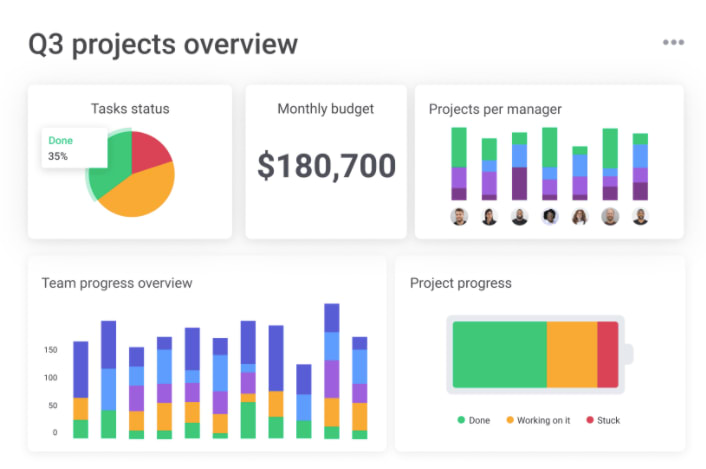
Plus, if life happens and changes are needed, our change request template helps formalize the process, so it can be well managed, and the impact mitigated effectively.
Most importantly though, our collaboration tools enable the right conversations to happen at the right time throughout the project life cycle.
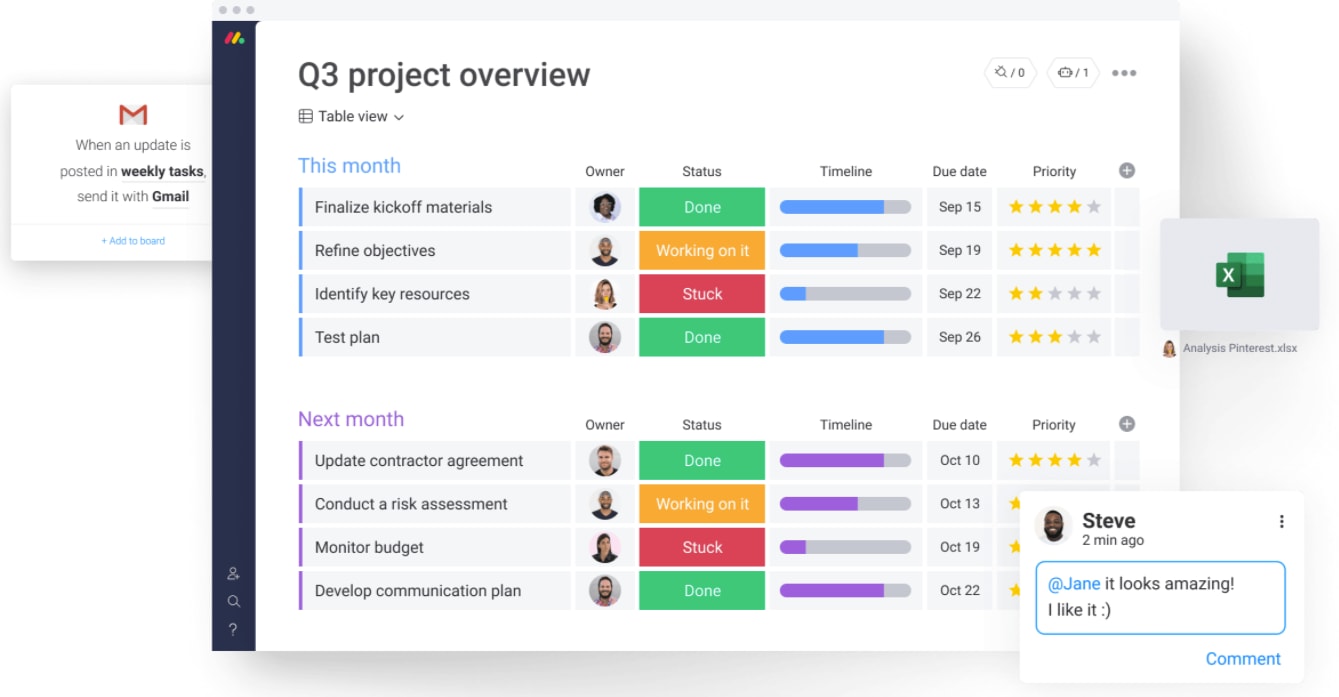
Whether that’s in-platform or using one of our 40+ integrations to sync with your favorite tool, monday.com makes working together simple.
Value comes from the conversation
Ultimately, the triple constraint theory is, well, just a theory.
Its value comes from helping project stakeholders get really clear about how they’ll measure project success and what the key constraint is for them. Use whichever model works best for reassurance.
Whether you end up picking triangle, diamond, or star, defining what a successful project looks like is a discussion that needs to happen early in the project lifecycle. Why not get the conversation started with our project proposal template?

